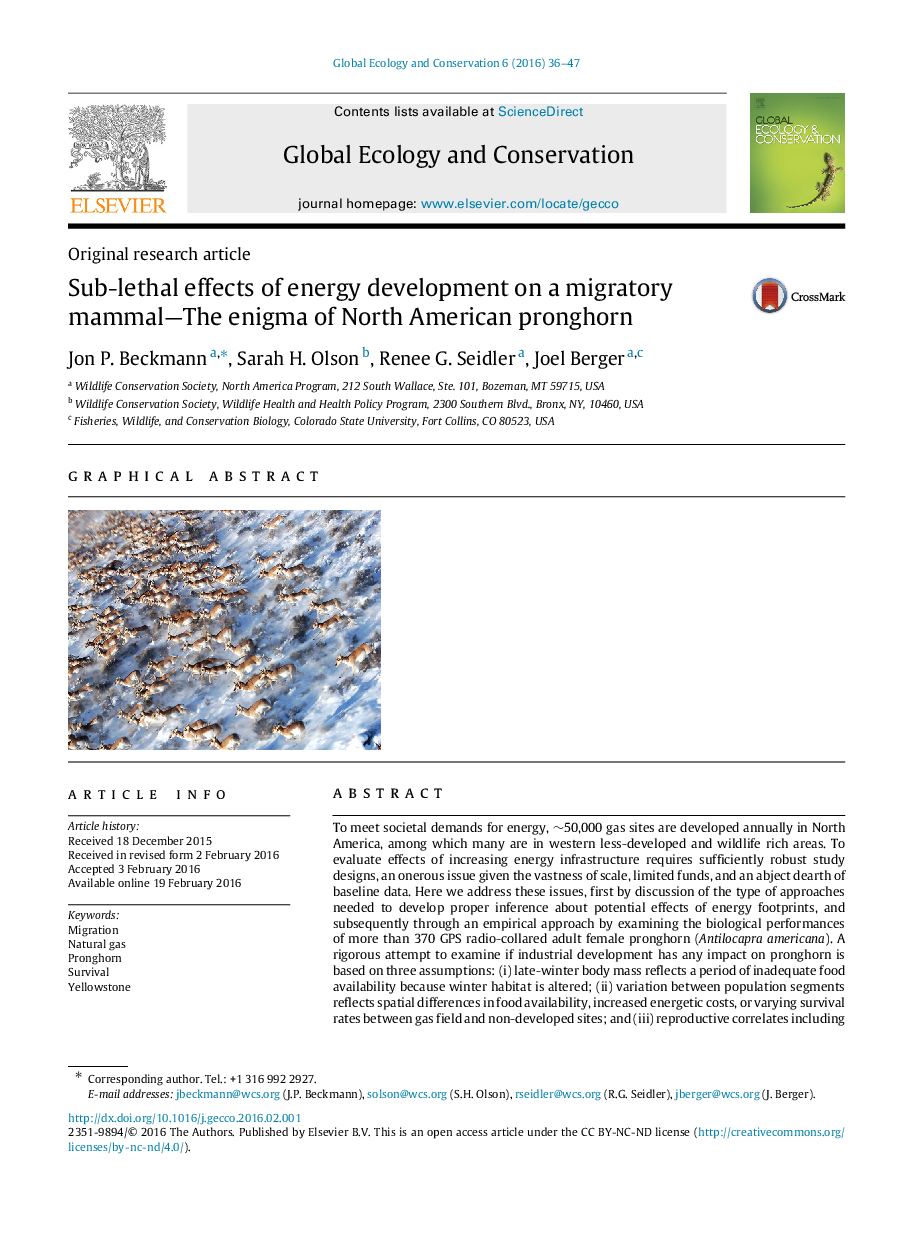| کد مقاله | کد نشریه | سال انتشار | مقاله انگلیسی | نسخه تمام متن |
|---|---|---|---|---|
| 4379633 | 1617661 | 2016 | 12 صفحه PDF | دانلود رایگان |
To meet societal demands for energy, ∼∼50,000 gas sites are developed annually in North America, among which many are in western less-developed and wildlife rich areas. To evaluate effects of increasing energy infrastructure requires sufficiently robust study designs, an onerous issue given the vastness of scale, limited funds, and an abject dearth of baseline data. Here we address these issues, first by discussion of the type of approaches needed to develop proper inference about potential effects of energy footprints, and subsequently through an empirical approach by examining the biological performances of more than 370 GPS radio-collared adult female pronghorn (Antilocapra americana). A rigorous attempt to examine if industrial development has any impact on pronghorn is based on three assumptions: (i) late-winter body mass reflects a period of inadequate food availability because winter habitat is altered; (ii) variation between population segments reflects spatial differences in food availability, increased energetic costs, or varying survival rates between gas field and non-developed sites; and (iii) reproductive correlates including physiological and immunological markers and adult survival are lower at sites varying in habitat quality. Our study area situated in one of the world’s premier wildlife regions–the southern Greater Yellowstone Ecosystem–harbors approximately 100,000 wintering ungulates, some of North America’s longest migrations, and two of the continent’s largest gas fields. We compared the response of five variables between wild pronghorn in control (not disturbed) and experimental (developed gas fields with well pads, roads, and traffic) sites—pregnancy, chronic stress, immune function, body mass, and adult survival. Despite shifts in animal movements, which included avoidance of energy infrastructure where development is occurring at the highest densities inside two of the largest natural gas fields in North America (Pinedale Anticline Project Area [PAPA] and Jonah fields) and other behavioral or ecological observations of sub-lethal effects, we failed to reject the null hypothesis that development is unrelated to parity in pronghorn biological responses. Studies intent on producing knowledge to assess whether energy development is inimical or not to ungulates will increasingly require appropriate time scales and understanding whether populations are below an expected food ceiling. Further, as with pronghorn in our study region, knowing if individuals are at the limits of their biological range (e.g. altitude) where stressful winter conditions may mask impacts of development is important.
Figure optionsDownload as PowerPoint slide
Journal: Global Ecology and Conservation - Volume 6, April 2016, Pages 36–47
